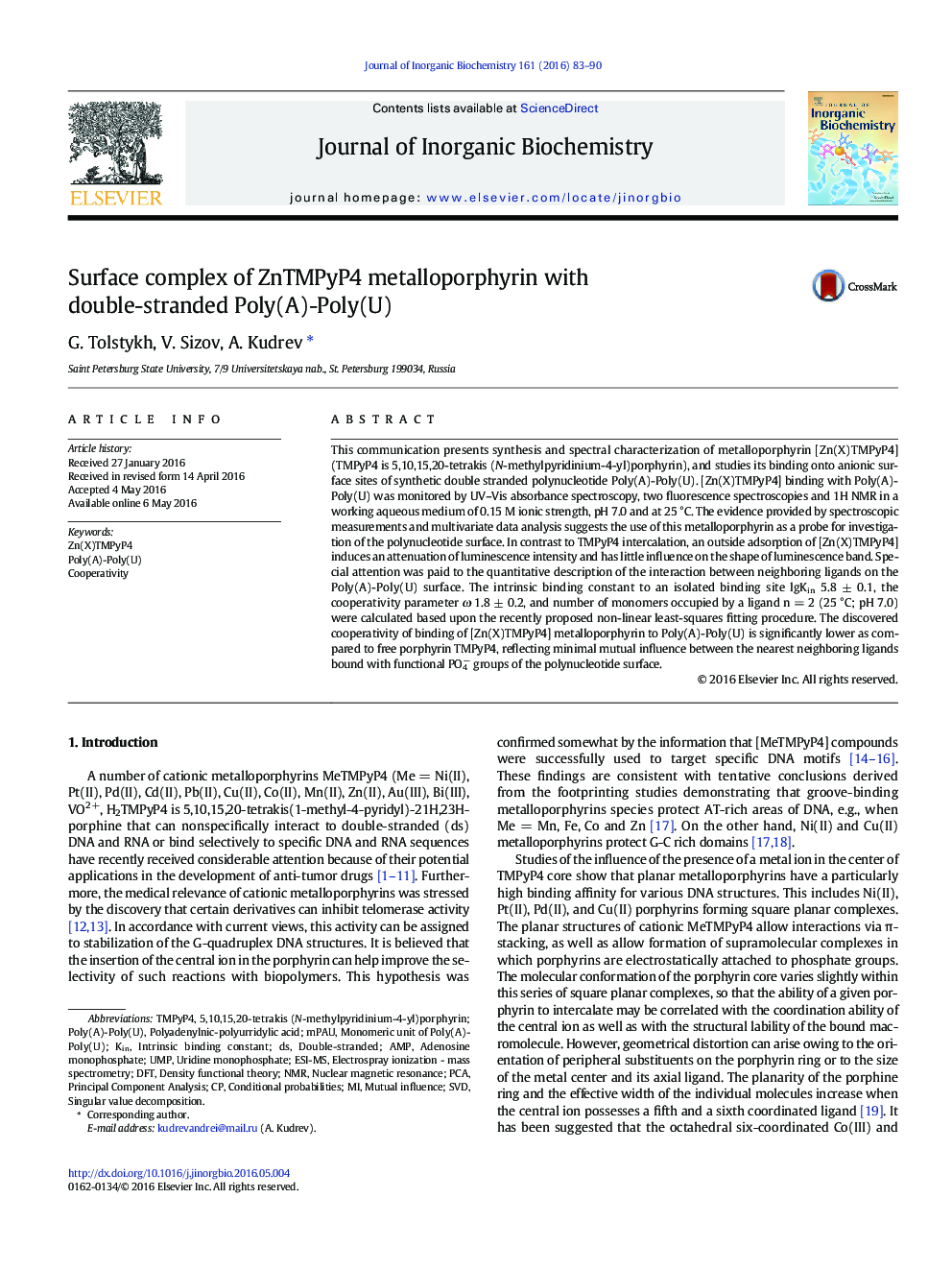| Article ID | Journal | Published Year | Pages | File Type |
|---|---|---|---|---|
| 1315806 | Journal of Inorganic Biochemistry | 2016 | 8 Pages |
•A new insight into mechanism of binding between Zn(II) metalloporphyrin and dsRNA.•A new computational approach for studying biopolymer-ligand interactions.•The identification of binding mode and affinity of a ligand to Poly(A)-Poly(U).•Theoretical analysis and experimental result were well matched.
This communication presents synthesis and spectral characterization of metalloporphyrin [Zn(X)TMPyP4] (TMPyP4 is 5,10,15,20-tetrakis (N-methylpyridinium-4-yl)porphyrin), and studies its binding onto anionic surface sites of synthetic double stranded polynucleotide Poly(A)-Poly(U). [Zn(X)TMPyP4] binding with Poly(A)-Poly(U) was monitored by UV–Vis absorbance spectroscopy, two fluorescence spectroscopies and 1H NMR in a working aqueous medium of 0.15 M ionic strength, pH 7.0 and at 25 °C. The evidence provided by spectroscopic measurements and multivariate data analysis suggests the use of this metalloporphyrin as a probe for investigation of the polynucleotide surface. In contrast to TMPyP4 intercalation, an outside adsorption of [Zn(X)TMPyP4] induces an attenuation of luminescence intensity and has little influence on the shape of luminescence band. Special attention was paid to the quantitative description of the interaction between neighboring ligands on the Poly(A)-Poly(U) surface. The intrinsic binding constant to an isolated binding site lgKin 5.8 ± 0.1, the cooperativity parameter ω 1.8 ± 0.2, and number of monomers occupied by a ligand n = 2 (25 °C; pH 7.0) were calculated based upon the recently proposed non-linear least-squares fitting procedure. The discovered cooperativity of binding of [Zn(X)TMPyP4] metalloporphyrin to Poly(A)-Poly(U) is significantly lower as compared to free porphyrin TMPyP4, reflecting minimal mutual influence between the nearest neighboring ligands bound with functional PO4− groups of the polynucleotide surface.
Graphical abstractResults obtained from UV–Vis, fluorescence and 1H NMR studies, and DFT calculations have consistently revealed that metalloporphyrin Zn(II)-5,10,15,20-tetrakis(N-methylpyridinium-4-yl)porphyrin shows preferential binding to surface PO4− functional groups of Poly(A)-Poly(U). This binding mode is characterized by affinity lgKin = 5.8 and cooperativity ω = 1.8.Figure optionsDownload full-size imageDownload as PowerPoint slide
